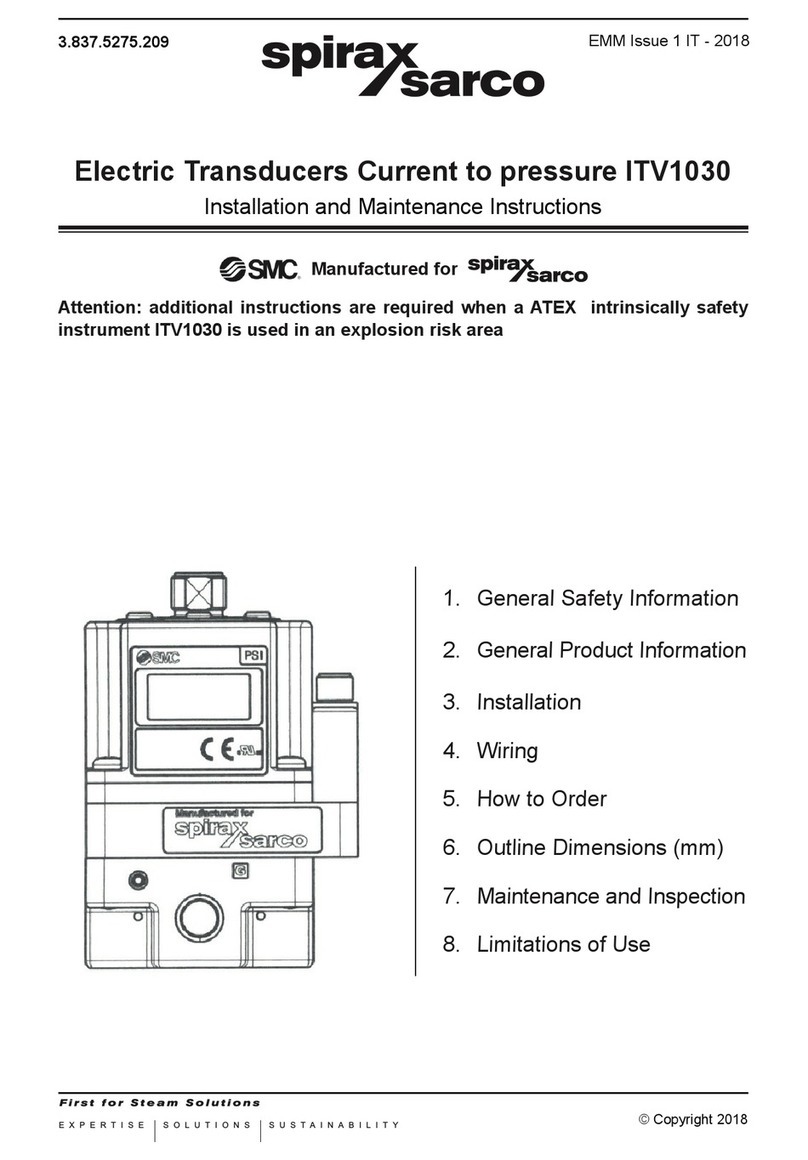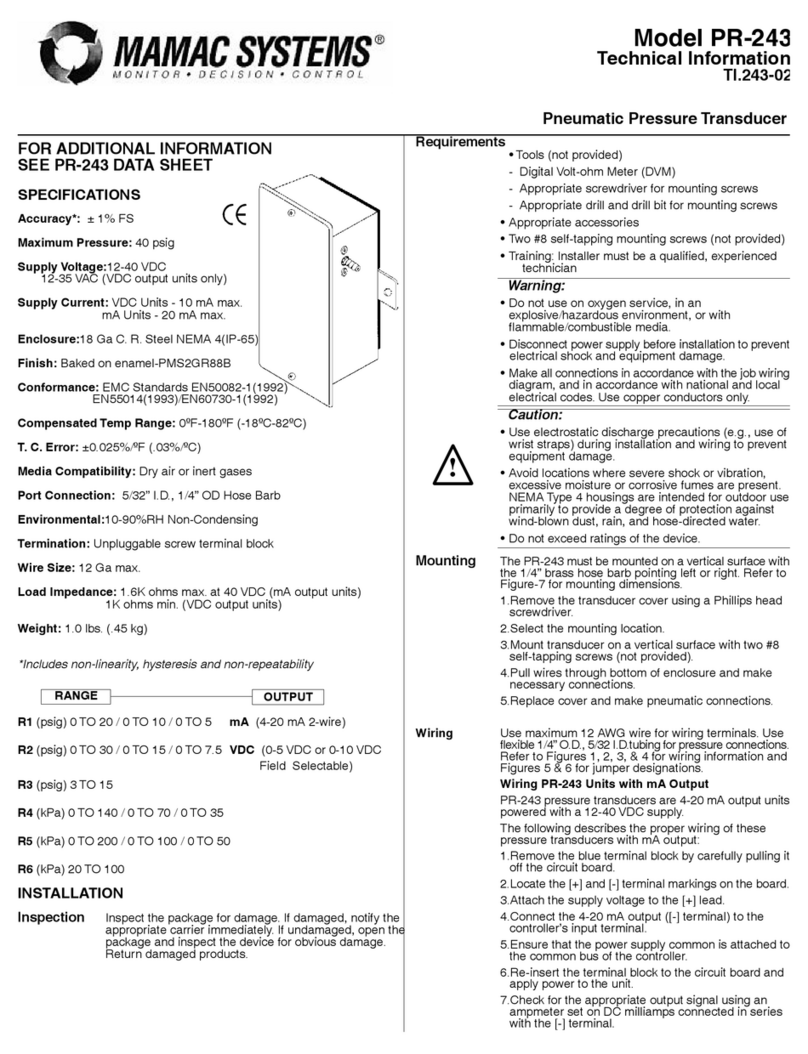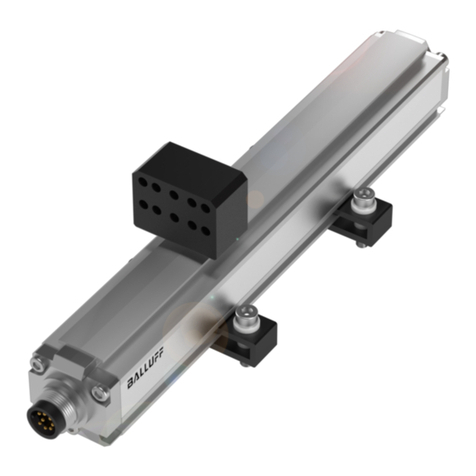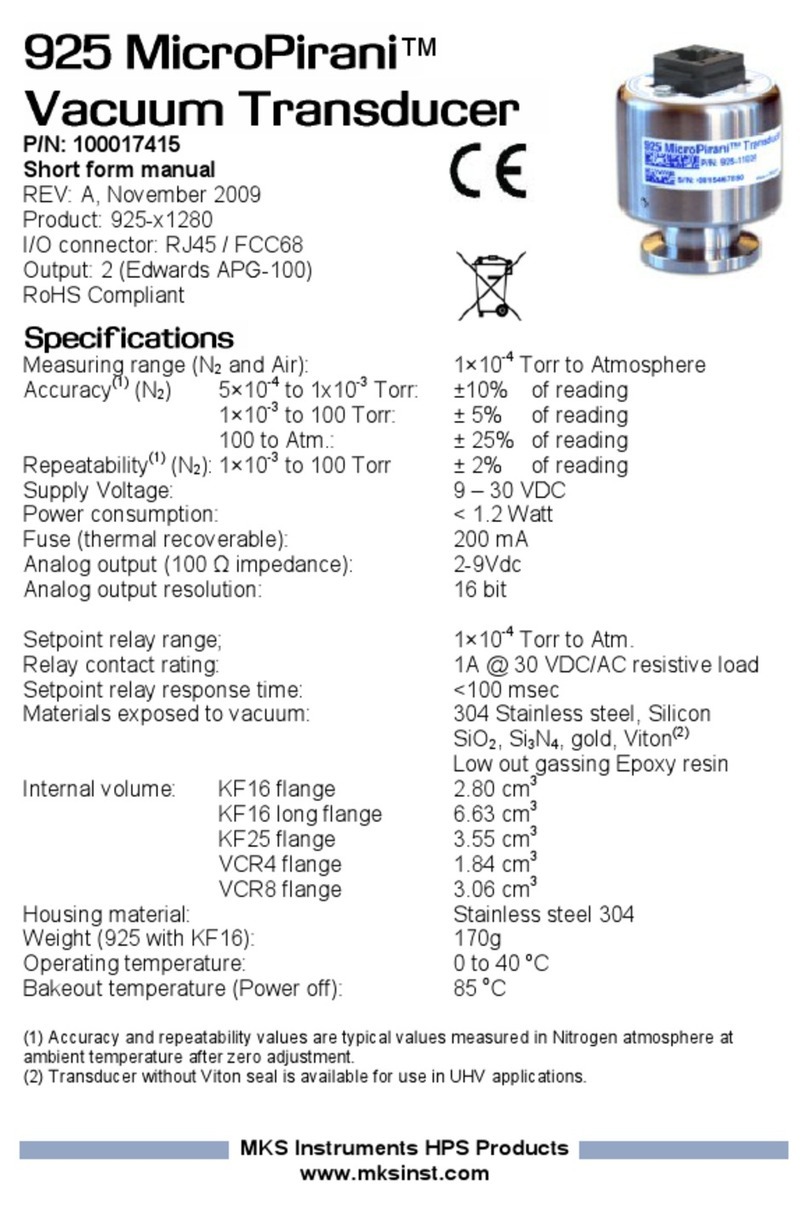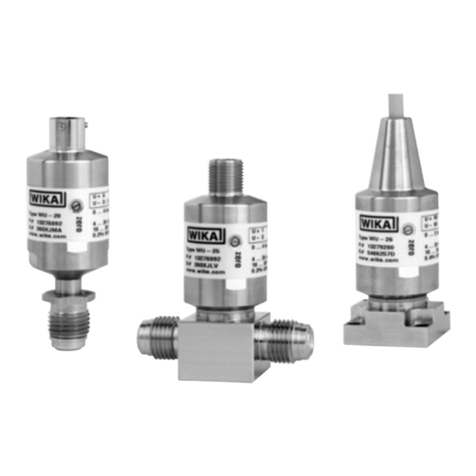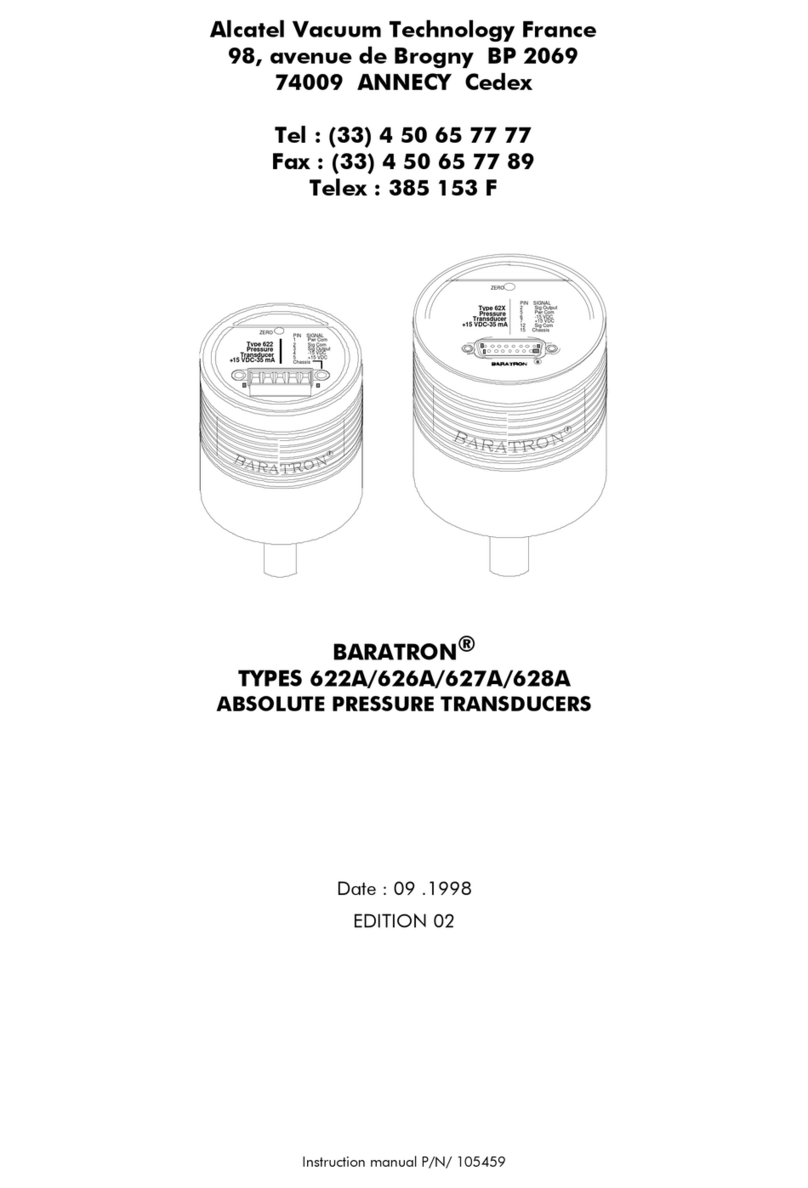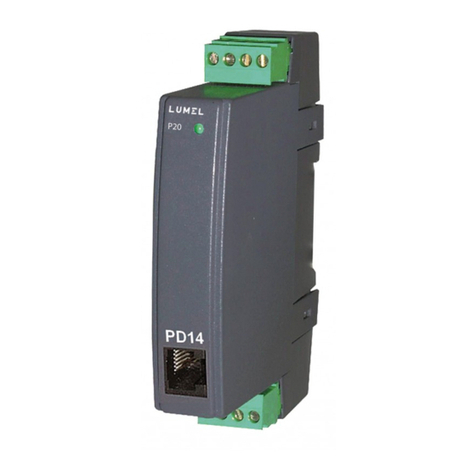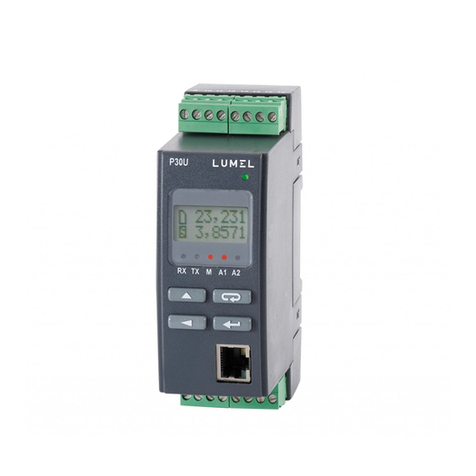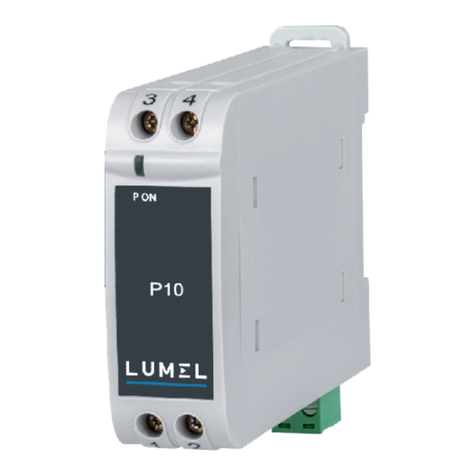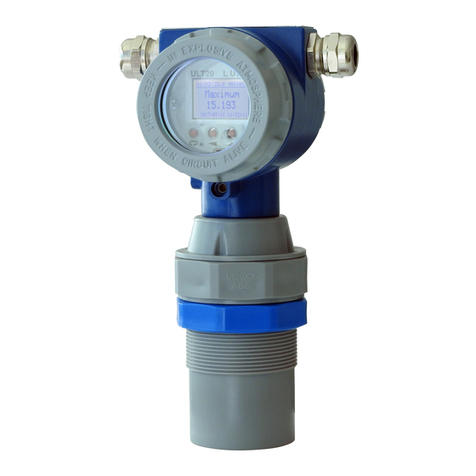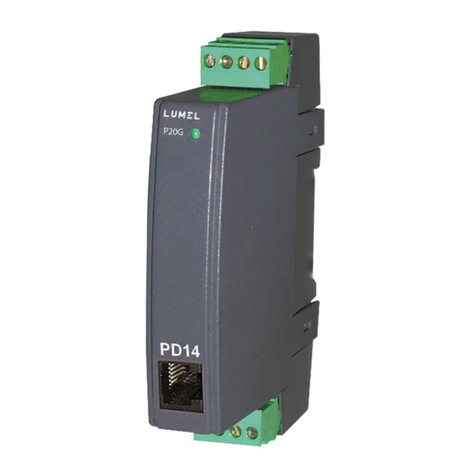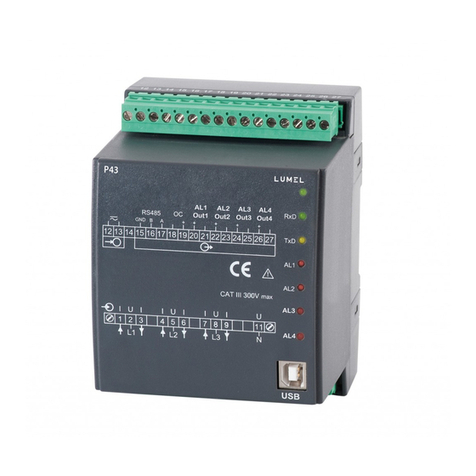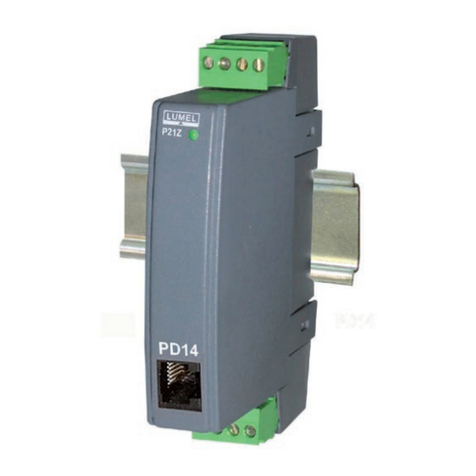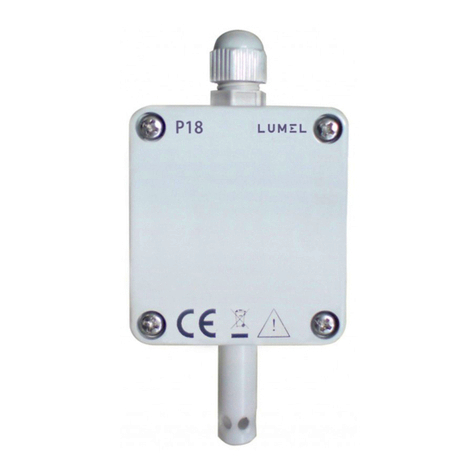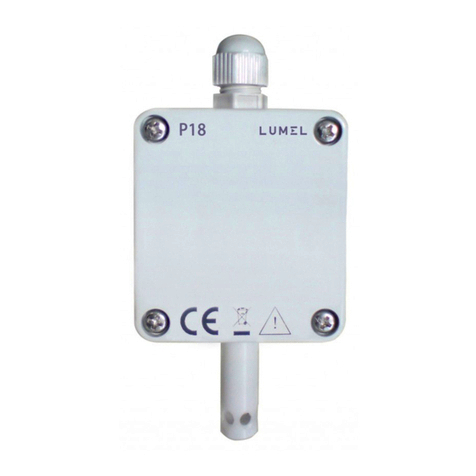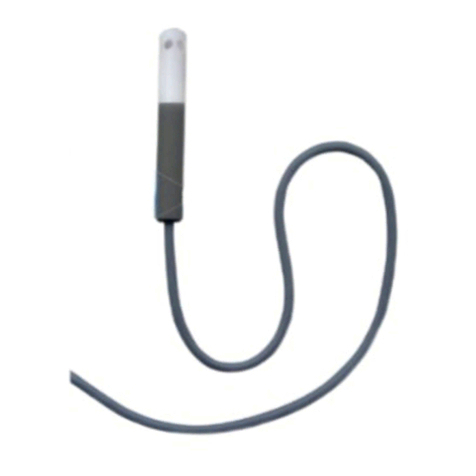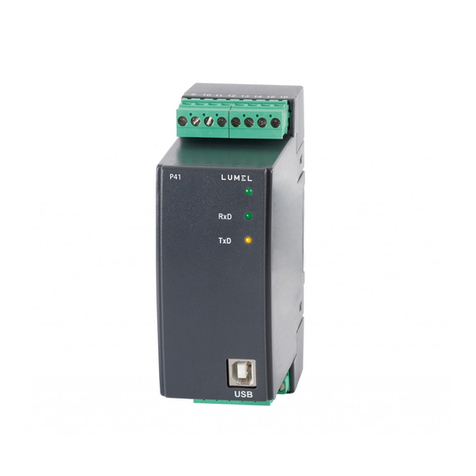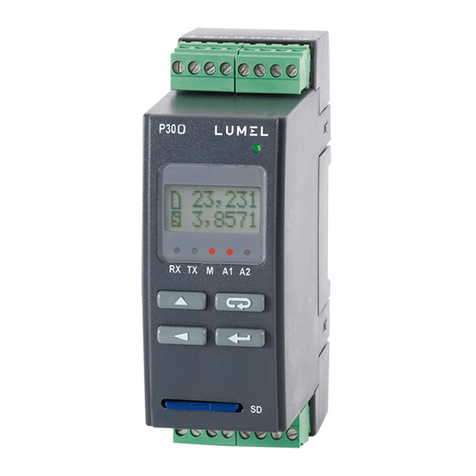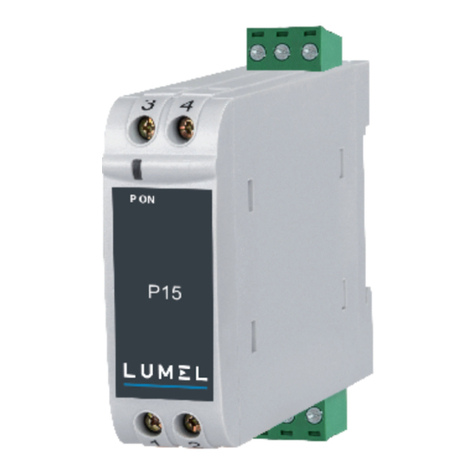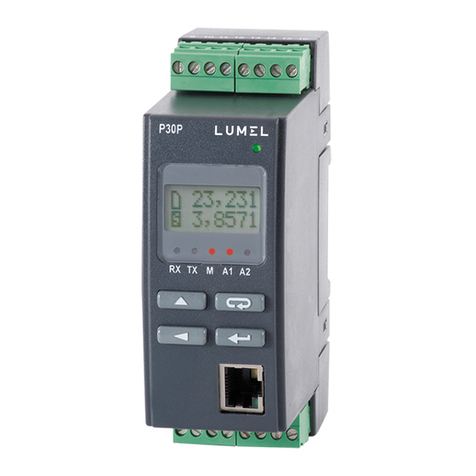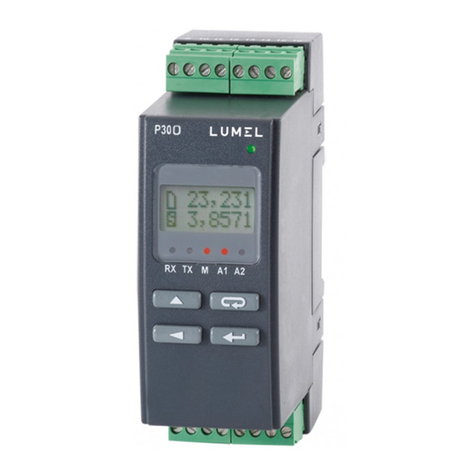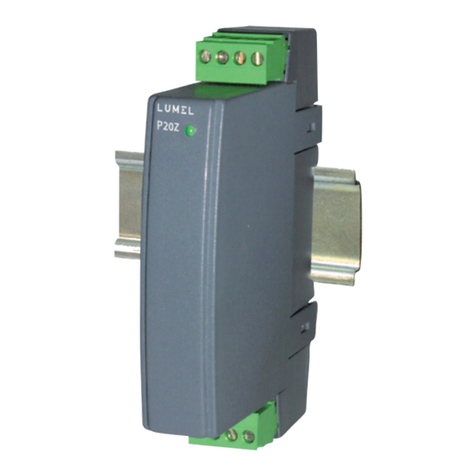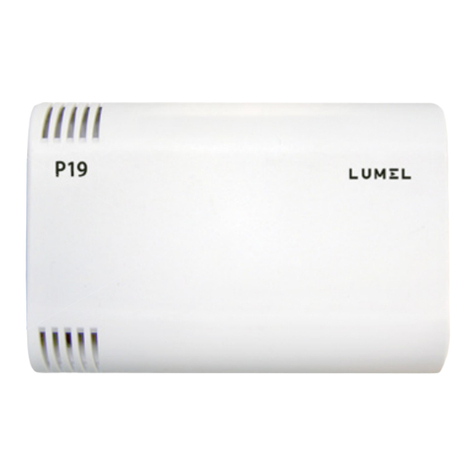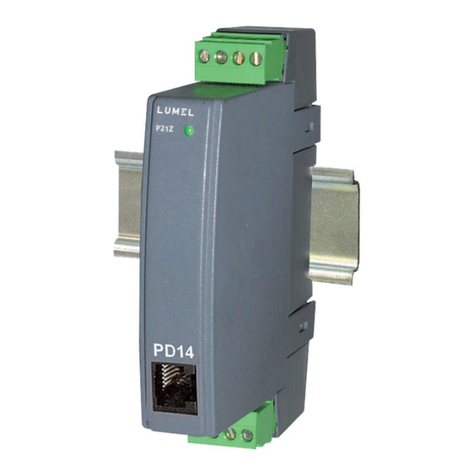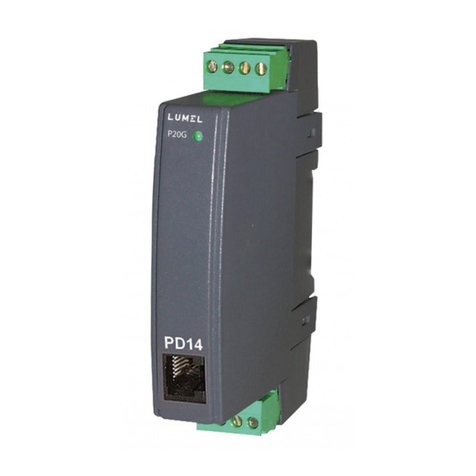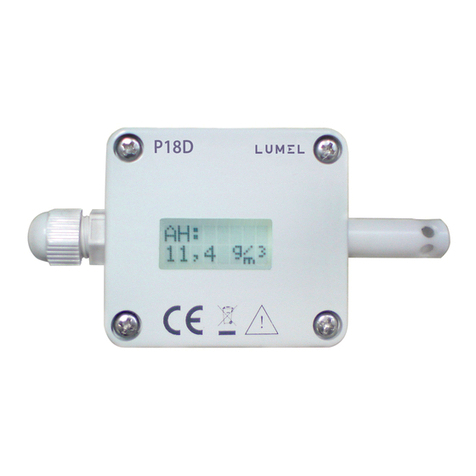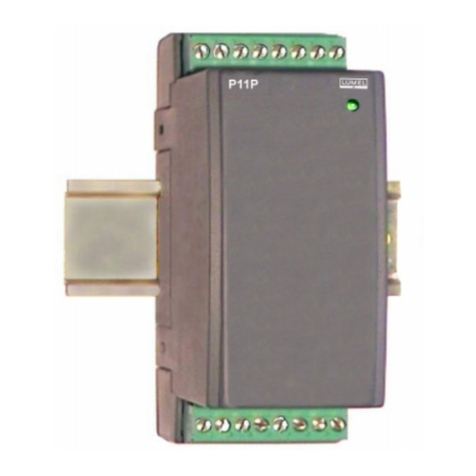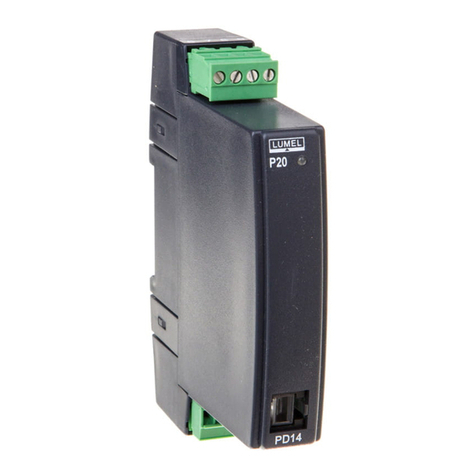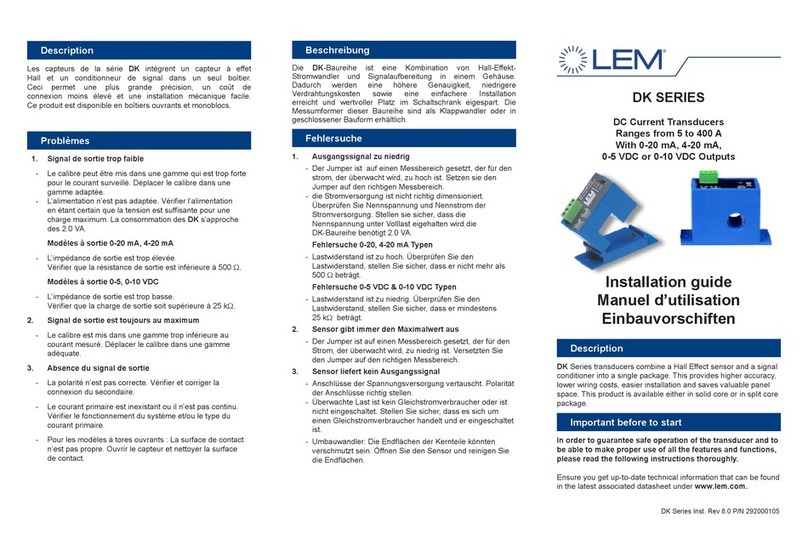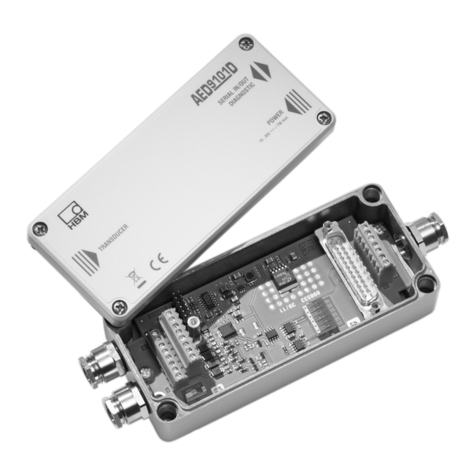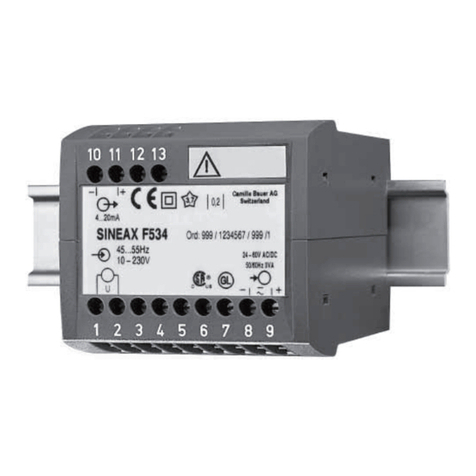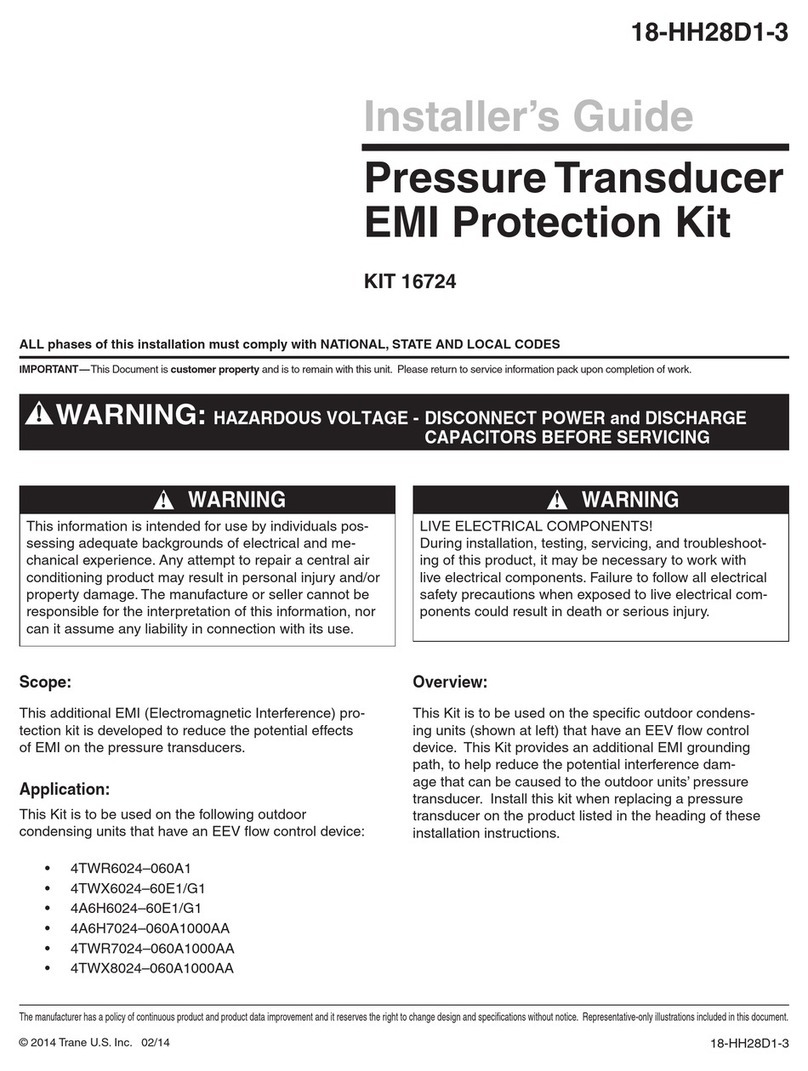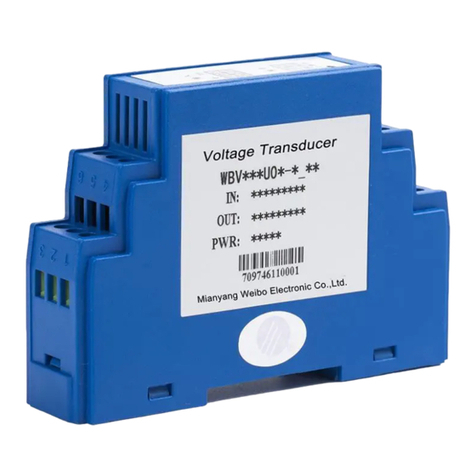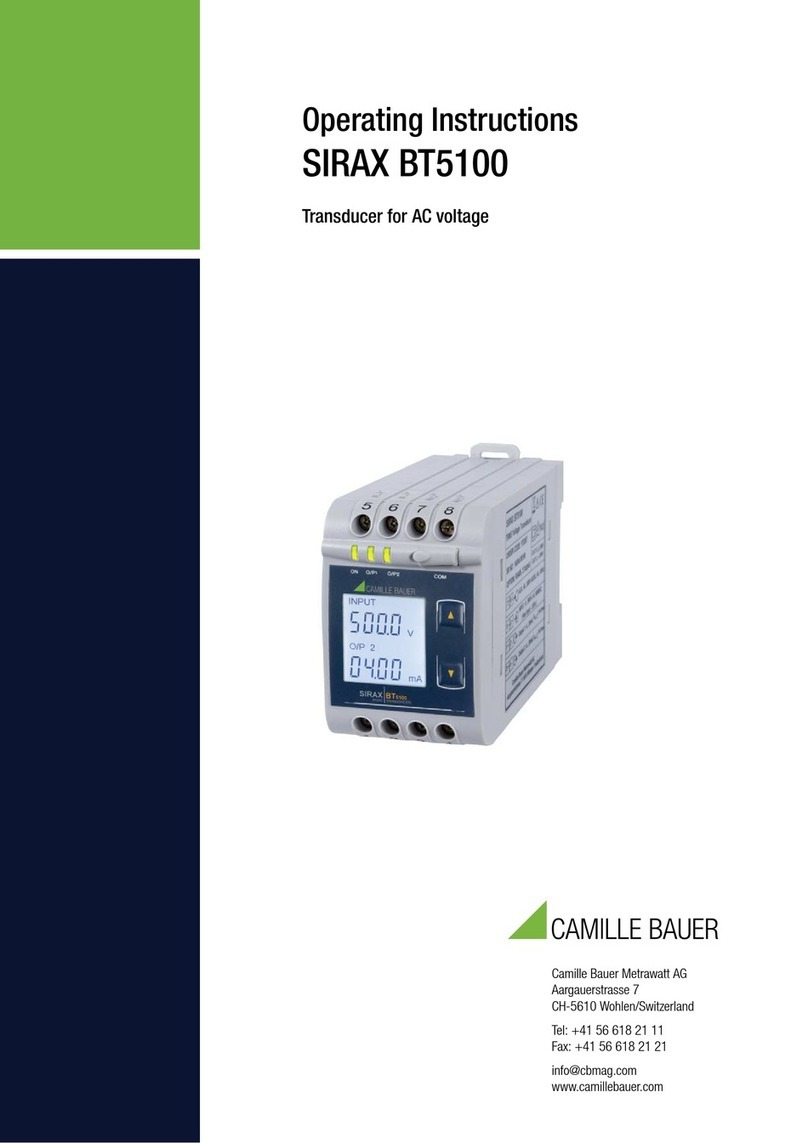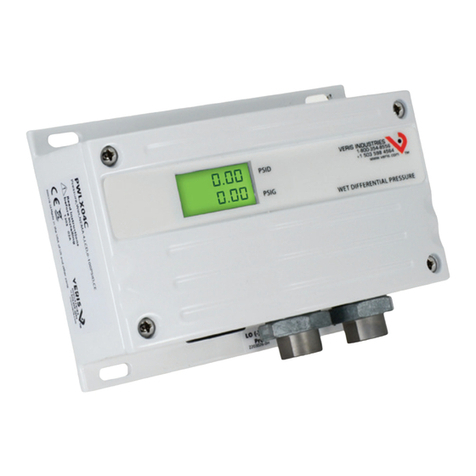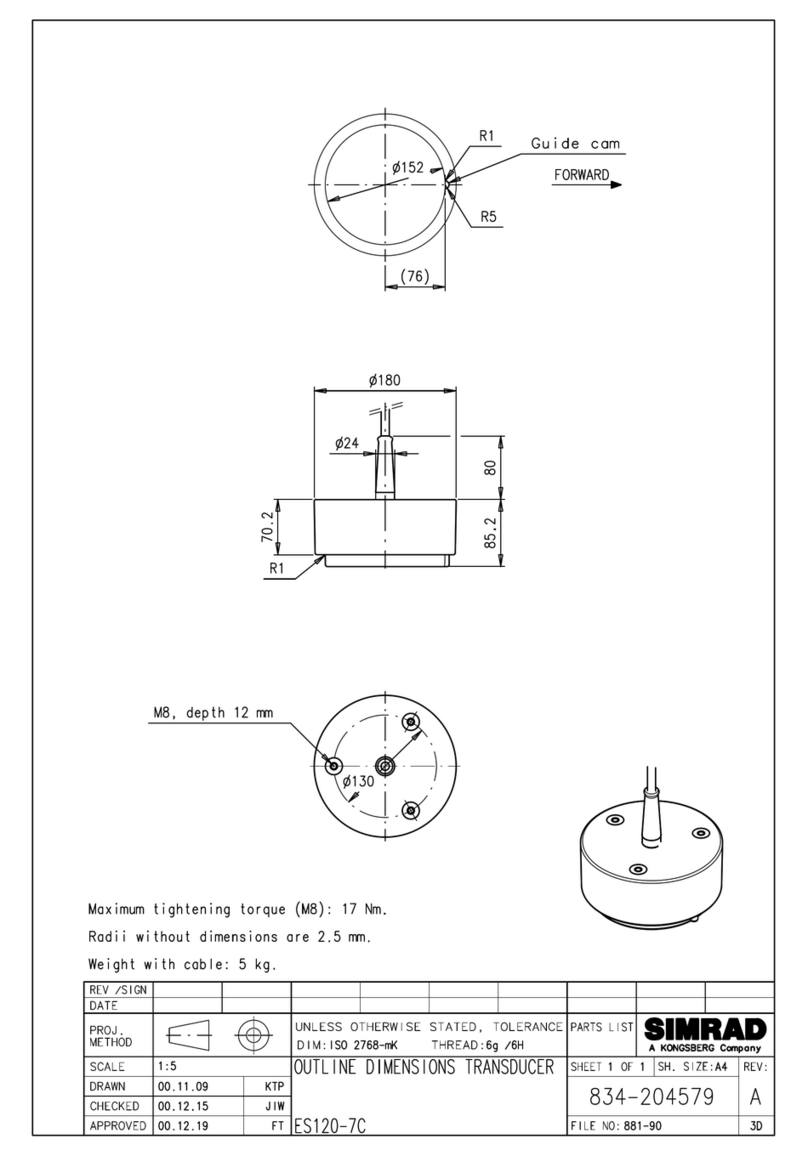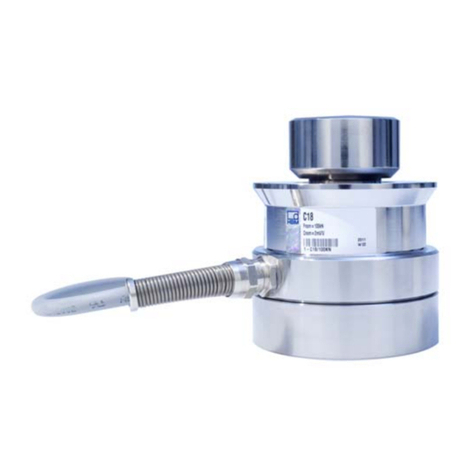
8
PL
Wyjście cyfrowe RS-485: protokół transmisji: MODBUS; prędkość
transmisji: 4800, 9600,19200,38400,57600 bit/s; tryb RTU: 8N2, 8E1,
8O1, 8N1; maksymalny czas odpowiedzi: 500 ms
Wyjście analogowe: prądowe: 4...20 mA; napięciowe: 0...10 V;
maksymalna rezystancja obciążenia wyjścia prądowego:100 ;
minimalna rezystancja obciążenia wyjścia napięciowego: 1 k
Znamionowe warunki użytkowania: zasilanie: 9...24 V a.c./d.c.;
pobór mocy: < 0,5 VA; temperatura otoczenia: - 20...23...60oC;
wilgotność względna powietrza < 95% 3); prędkość przepływu powie-
trza 0,5 m/s 4) ; czas wstępnego wygrzewania:15 minut;
stopień ochrony zapewniany przez obudowę: IP 65;
mocowanie: na ścianie; masa: 0,13 kg; wymiary: (35 58 118) mm
- pozycja pracy:
● w aplikacjach nie narażonych na bezpośredni kontakt wody:
dowolna
● w aplikacjach narażonych na kontakt z wodą: komorą czujnika
w kierunku ziemi
Kompatybilność elektromagnetyczna:
- odporność na zakłócenia elektromagnetyczne wg PN-EN 61000-6-2
- emisja zakłóceń elektromagnetycznych wg PN-EN 61000-6-4
Wymagania bezpieczeństwa: wg normy PN-EN 61010-1
- kategoria instalacji: III
- stopień zanieczyszczenia: 2
- napięcie pracy względem ziemi: 50 V
1) W przypadku kondensacji pary wodnej na powierzchni czujnika
błąd pomiaru może przekroczyć błąd podstawowy do momentu
wysuszenia struktury czujnika.
2) bezwzględny zakres pomiaru temperatury wynosi - 30...85°C jednak
poza zakresem podstawowym klasa pomiaru nie jest gwarantowana.
3) dopuszczalna kondensacja pary wodnej przy zastosowaniu
dodatkowych osłon czujnika, patrz tab. 9.
4) dla przepływu powietrza < 0,5 m/s błąd pomiaru temperatury
i wilgotności może wzrosnąć o 100%.
